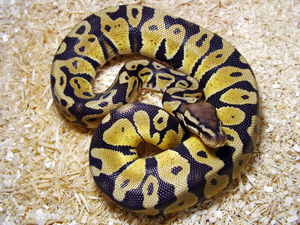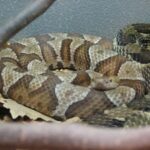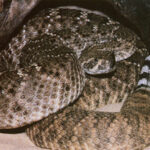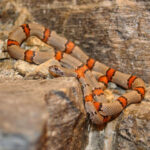An increasing number of people are turning to snakes as pets, perhaps because they are exotic, but more likely because they seem to need less care than a dog or cat. Owning a ball python snake is an enjoyable experience but does require work. A ball python is a non-venomous snake which grows between two and six feet, with the female usually the larger of the genders. Ball pythons are considered wonderful pets because they are docile and small, which works well for captivity in homes. They are called ball pythons because, when they are nervous or afraid, they curl up into a tight little ball, tucking their head inside their coils. Most ball pythons live between twenty and forty years, though the current record is more than sixty years.
If you have never owned a ball python before, it is recommended that you purchase a captive-bred snake. Many ball pythons that are caught in the wild refuse to eat in captivity, which can raise numerous problems for a novice snake owner. Further, ball pythons that are captive-bred adjust easier to new environments and are typically more active than those which are transported from the wild.
Further, a snake that has been brought in for the wild is far more likely to be infested with parasites. They bring those parasites into the home and can infect other pet snakes or cause other health problems to pets and humans alike.
In some cases, you can find ball pythons in exotic pet stores, but make sure to ask if they have any which are captive-bred. If you can’t find a suitable ball python at an exotic pet store, you can also seek out breeders, which will charge more than the pet store, but you’ll have a snake that is acclimated to life in the home. Young ball pythons (under two feet) cost between $50.00 and $200.00, depending on the color patterns, while an older ball python will cost between $75.00 and $500.00. Before you purchase a ball python, however, make sure you have all of the equipment you need:
Aquarium. Your snake should be housed in a sufficiently large aquarium (10 – 30 gallons) into which it can grow. Even if you purchase a small, younger snake, you won’t want to have to buy a new aquarium when it grows up.
Substrate. Most ball python breeders recommend AstroTurf as the perfect aquarium lining, though absorbent shavings or shredded bark will work just fine, as well.
Thermometor. Make sure that you have a way to test the temperature of your ball python’s aquarium. You’ll need to use a heat lamp to create a “basking spot”, so two thermometors are best to make sure you have accurate temperatures. The majority of the aquarium can stay around 82 degrees Farenheit, while the basking spot should be elevated to around 90 degrees for comfort. At night, you don’t need to use the heat lamp and temperatures can drop to 75 degrees.
Water. In addition to drinking water, your ball python will also need a water dish large enough for him to soak in while he is shedding. The same dish for drinking can be used for soaking, but it needs to be large enough so that your snake can fit at least half of his body into it.
Feed. Ball pythons eat mice or small rats, but make sure that its prey isn’t larger than the largest part of the snake. If your ball python will have it, you can feed it frozen mice, which can be found at your local pet store. Some ball pythons, however — particularly those born in the wild — won’t even touch a frozen mouse, so you’ll need to feed live mice. To avoid allowing the mouse to injure your snake, it is sometimes best to bop it on the head to stun it until your ball python has begun the constriction process.
Some ball python owners prefer to feed their snakes in a different area than where it usually lives. This helps because most people enjoy handling their snakes, and you don’t want the animal to confuse your hand with a juicy mouse. By feeding it in a separate container from where it lives, you create an important distinction and reduce the risk of being struck when reaching in to pick up your snake.





